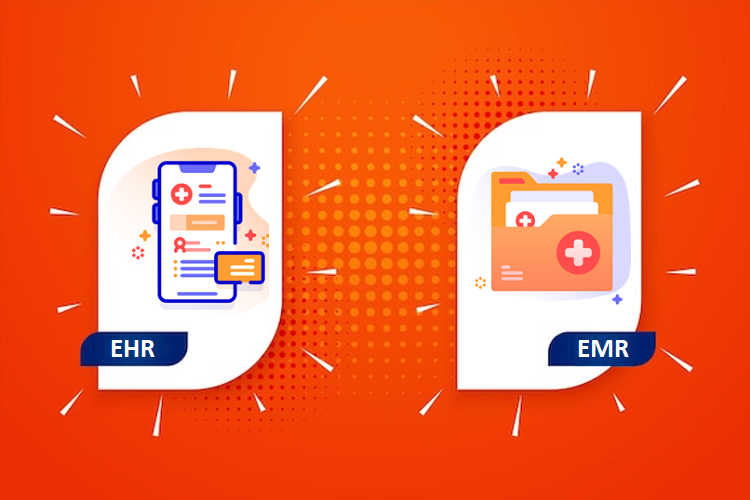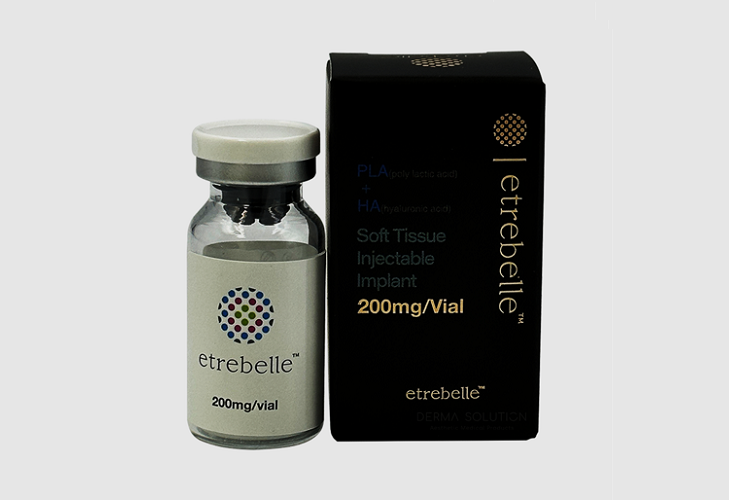Thanks to the digital transformation, EHR and EMR will change how patient information is stored, accessed, and used in today’s rapidly evolving healthcare industry. The confusion stems from the frequent interchangeability of these terms. However, they stand for unique ideas with various ramifications for patients and healthcare professionals.
EHR and EMR are both digital systems used in healthcare settings to manage patient information. This article focuses on an EHR billing service for gynecology and examines the complexity of EHR and EMR and their distinctions, advantages, and repercussions.
Electronic Health Records (EHR)
Electronic health records (EHR) have developed into a crucial tool for adjusting how patient information is managed, accessed, and used in the complicated world of modern healthcare. An electronic health record is a digital repository that can be searched that contains a person’s complete medical history, treatment records, test results, and other health-related information. This digital representation of a patient’s health journey has a tremendous effect on patients, healthcare workers, and the efficiency of healthcare systems.
Components of an EHR
The digital equivalent of a paper chart is only some of what an EHR is. It provides an extensive picture of a patient’s medical history and contains various health-related information.
The components of an EHR include
Personal Information: Name, age, gender, contact information, and emergency contacts for the patient, as well as other essential demographic data.
- Medical History: Information on the patient’s current and past health conditions, including chronic illnesses, operations, and medical diagnoses.
- Medications: A comprehensive inventory of all prescribed drugs, their dosages, and any possible drug interactions or allergies.
- Treatment Plans: Documentation of treatment strategies, therapeutic interventions, and follow-up care plans prescribed by healthcare providers.
- Imaging and Test Results: Combining diagnostic information from pathology reports, laboratory test results, and radiology pictures.
- Vital Signs: Information on the patient’s strong indicators, such as their blood pressure, heart rate, temperature, and breathing rate, is updated regularly.
- Immunization Records: A list of the patient’s immunizations, ensuring that immunization schedules are correct and on time.
- Allergies: Document known allergies or adverse reactions to medications, foods, or environmental factors.
- Billing and Administrative Information: Inclusion of billing codes, insurance details, and administrative notes related to appointments and billing.
- Patient Notes and Communications: Space for healthcare professionals to input clinical notes, observations, and communications related to patient care.
Benefits of EHRs
The adoption of EHRs has brought forth many benefits that transcend traditional paper-based medical records. Some of the key advantages include:
- Efficient Data Access: EHRs enable quick and secure access to patient information, eliminating the need for manual retrieval of paper charts and minimizing errors.
- Interoperability: EHR systems are designed to facilitate data exchange between different healthcare providers and institutions, leading to improved care coordination.
- Enhanced Patient Safety: Alerts and reminders within EHRs help prevent medication errors, ensure timely screenings, and reduce the risk of adverse events.
- Improved Communication: Healthcare teams can collaborate more effectively through shared access to patient information, leading to informed decision-making.
- Patient Engagement: Patients can access their EHRs, fostering a sense of ownership over their health and facilitating informed discussions with healthcare providers.
- Streamlined Workflow: EHRs automate various administrative tasks such as appointment scheduling, billing, and insurance claims, optimizing the overall workflow.
- Data Analytics: Aggregated data within EHRs can be analyzed to identify trends, patterns, and opportunities for quality improvement in healthcare delivery.
Challenges and Considerations
While EHRs have many benefits, there are specific difficulties in implementing and using them. Essential factors in adopting and using EHRs include ensuring data security, upholding privacy compliance (such as complying with the Health Insurance Portability and Accountability Act, or HIPAA), managing interoperability between various EHR systems, and addressing issues with data accuracy.
Electronic Medical Records (EMR)
Electronic Medical Records (EMR) have become a crucial tool that modifies how medical information is recorded, kept, and accessed inside specific healthcare organizations in the constantly changing world of healthcare technology. An electronic medical record is a computerized representation of a patient’s clinical information, medical history, and treatment plans in a healthcare facility. The faster record-keeping and improved access to patient information provided by this digital repository have essential consequences for healthcare practitioners.
Components of an EMR
An EMR is a digital repository for a patient’s medical data and clinical encounters within a specific healthcare provider’s organization. Critical components of an EMR include:
- Patient History: A comprehensive record of the patient’s medical history, including previous illnesses, surgeries, and medical diagnoses.
- Clinical Notes: Detailed notes entered by healthcare professionals during patient visits encompass symptoms, observations, and treatment plans.
- Medications: A list of prescribed medications, dosages, and instructions provided by healthcare providers.
- Test Results: Integration of laboratory test results, radiology reports, and other diagnostic findings.
- Treatment Plans: Document the treatment strategies and interventions recommended by healthcare professionals.
- Vital Signs: Regular updates on the patient’s vital signs, including heart rate, blood pressure, temperature, and respiratory rate.
- Immunizations: A record of vaccinations administered to the patient.
- Allergies: Document any known allergies or adverse reactions to medications or other substances.
- Billing and Administrative Information: Inclusion of billing codes, insurance details, and administrative notes related to patient appointments and billing.
Benefits of EMRs
The adoption of EMRs offers several benefits that enhance healthcare delivery within individual healthcare organizations:
- Efficient Record-Keeping: EMRs eliminate the need for paper-based records, enabling healthcare providers to access and update patient information quickly.
- Enhanced Accuracy: EMRs reduce the risk of errors associated with manual record-keeping, improving patient safety.
- Streamlined Workflow: Administrative tasks such as appointment scheduling, prescription management, and billing can be streamlined through EMRs, optimizing healthcare workflows.
- Clinical Decision Support: EMRs often include clinical decision support tools that provide healthcare providers with alerts, reminders, and evidence-based recommendations during patient encounters.
- Data Retrieval: Healthcare professionals can easily retrieve patient information, reducing the time spent searching for paper records.
Challenges and Considerations
While EMRs offer notable advantages, challenges, and considerations are associated with their adoption. Ensuring data security, maintaining patient privacy (adhering to regulations like the Health Insurance Portability and Accountability Act or HIPAA), ensuring data accuracy, and addressing issues related to interoperability when sharing data with other healthcare organizations are essential factors to consider when implementing and utilizing EMRs.
Continuity of Care
EHRs contribute to better continuity of care as patients move between different healthcare settings. EMRs are less effective in ensuring this continuity as they do not transcend organizational boundaries.
EHR
- Comprehensive Patient Care: EHRs enable healthcare providers to access a patient’s complete medical history, aiding in more accurate diagnoses and treatment plans.
- Efficiency: EHRs streamline administrative tasks such as billing, appointment scheduling, and prescription refills, enhancing operational efficiency.
- Interoperability: The interoperability of EHRs supports seamless communication and data exchange among healthcare professionals, leading to improved patient outcomes.
- Patient Engagement: Patients can access their EHRs, empowering them to manage their health and understand treatment options actively.
EMR
- Streamlined Record-Keeping: EMRs enhance the accuracy and accessibility of patient records within a single healthcare facility, reducing the risk of errors.
- Clinical Decision Support: EMRs offer clinical decision support tools that aid healthcare providers in making well-informed treatment decisions based on available patient data.
- Efficient Workflow: EMRs optimize clinical workflows by providing tools for documenting patient encounters, ordering tests, and managing medications.
EHR and EMR: What’s The Difference?
EHR and EMR are often used interchangeably, but they have distinct differences in the healthcare industry. Here’s a breakdown of their key dissimilarities:
Scope of Information
- EHR: EHRs encompass a broader range of health-related information, extending beyond individual medical facilities. They include data from multiple healthcare providers, offering a more comprehensive view of a patient’s health history. EHRs are designed to be accessible across different healthcare organizations.
- EMR: EMRs primarily contain medical and clinical data related to a patient’s history with a single healthcare provider. These records focus on the patient’s medical treatment within that specific practice.
Interoperability
- EHR: EHRs are built with interoperability in mind. They are intended to share patient information across various healthcare settings, ensuring that data can be securely exchanged among different providers, laboratories, pharmacies, and other relevant parties.
- EMR: EMRs are typically designed for internal use within a single healthcare facility. They may not easily exchange data with other systems or healthcare providers outside that organization.
Patient Access
- EHR: EHRs often include patient portals that allow individuals to access their health information, review test results, request appointments, and communicate with healthcare providers. This promotes patient engagement and empowerment.
- EMR: Patients may have limited access to their EMRs, if any. Access depends on the policies of the specific healthcare provider.
Data Continuity
- EHR: EHRs provide a longitudinal record of a patient’s health over time, consolidating information from various sources. This offers a more comprehensive overview of the patient’s medical history and ongoing healthcare needs.
- EMR: EMRs focus on the patient’s current episode of care within a single healthcare organization. They may not provide a complete historical record of a patient’s health.
Legal and Regulatory Considerations
- EHR: EHRs are expected to comply with industry standards and regulations, such as the Health Insurance Portability and Accountability Act (HIPAA), and they play a significant role in achieving nationwide interoperability goals.
- EMR: EMRs are subject to the same legal and regulatory requirements as EHRs, but they may have a more limited impact on healthcare providers’ ability to meet interoperability and data sharing requirements.
Conclusion
In the evolving healthcare technology landscape, EHR and EMR are pivotal in transforming patient information management and utilization. While their names might sound similar, the scope, interoperability, and patient-centricity differences set them apart.
Gynecology practices can further enhance their operational efficiency and patient care by incorporating specialized EHR billing services designed to meet the unique demands of their field.
Understanding these distinctions and utilizing the appropriate tools will be crucial for delivering effective and comprehensive medical services as healthcare advances.
I’m Emma Raven. I Wrote 100+ blogs on Health Niche. I’m writing 100% unique and SEO Optimized content. Here is the link for my website




